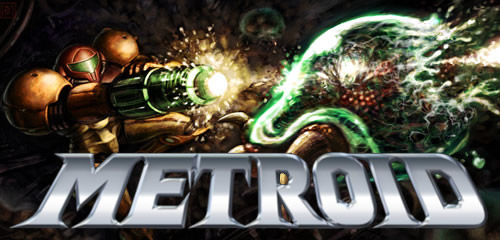
Adam Riley, Senior Editor
Metroid only came into my firing line with the release of Super Metroid on the Super Nintendo, with that game firmly remaining one of my favourites out of any I have played since. From the brooding sense of atmosphere imbued by the dark, dank underground corridors of the early stages, to the sense of foreboding instilled by the amazing soundtrack, as well as the great expansive feel of the whole environment, Super Metroid for me is still the pinnacle of the long-running series.However, that is not to say there have been no entries from Yoshio Sakamoto and his team at Nintendo Software Planning & Development Group No.1 that have come close. As an aside, Kid Icarus on the NES is one of his creations, along with his efforts on WarioWare, Inc, Rhythm Tengoku and Wario Land 4. Back on point, though, Sakamoto-san was the brains behind two legendary 2D entries, Metroid Fusion and Metroid: Zero Mission, the former being the fourth in the story, whilst the latter was a grand remake of Metroid on the NES. Both kept the style and substance of the 16-bit outing, whilst building upon various key elements to increase the tension, boost the puzzle side and tweak the formula slightly.
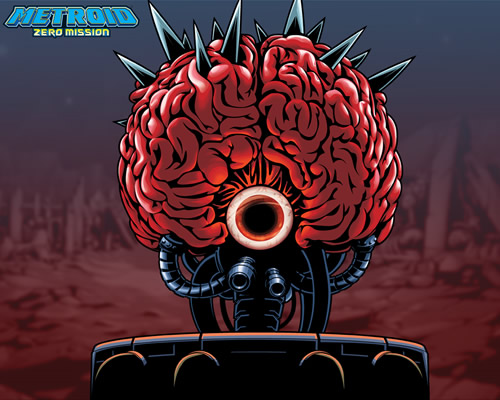
Considering how gripping Super Metroid, Metroid Fusion and Metroid: Zero Mission were, as well as how strong their sales were around the world, it always left me stunned to see Metroid Prime come into existence. Why has the fabled Metroid Dread never come into existence? Why were the only DS iterations the unusual experiment of Metroid Prime: Hunters and the (admittedly brilliant) Metroid Prime Pinball? How come it took a fan project to start a remake of Metroid 2: Return of Samus? For no matter how pleasing the first Prime game was, how superior its dark sequel, Echoes, was and how stunningly amazing Metroid Prime 3: Corruption turned out, they were no substitute for a cracking new 2D entry. Metroid: Other M was a step in the right direction, but Sakamoto-san himself even expressed how his team were not fully equipped for working on such powerful hardware, which is why Team Ninja was brought on-board. Hopes are high for a second Project M release on Wii U, though, especially given recent comments about how the series could definitely be coming to the new home console.
Mike Mason, Reviews/Features Editor
Samus' return to the big time in Metroid Prime was a shock on a couple of levels. Firstly, Nintendo had allowed the franchise to journey into the offices of a non-Japanese Nintendo subsidiary in Retro Studios, far away from its usual developers. Even more bizarre was seeing the series return not in the form of a side-scroller, as all previous Metroid titles, nor as a third-person 3D adventure as teased during the GameCube's reveal. No, Metroid Prime busted out a first-person viewpoint, becoming the first of Nintendo's major franchises to turn FPS - well, a first-person adventure, anyhow.
Shigeru Miyamoto was the man responsible for this change of perspective, which is not all too surprising when you consider that he wanted The Legend of Zelda: Ocarina of Time to play from Link's point of view. A space-searching bounty hunter would fit into this format well, standing up against the Halos of the world, and so Metroid Prime was born. Despite doubt at its unveiling, Metroid Prime turned out to be one of the best entries into the series, still retaining much of that precious Metroid atmosphere while shedding new light upon Samus Aran's past.
Almost nine years after its release, Metroid Prime still stands up quite well visually, thanks to its fantastic art direction. A jaunt (or slide) through Phendrana Drifts, with its eerie, icy music and gently drifting snowflakes, still feels magical. The visor effects, with condensation, dribbling water drops and reflections of Samus' face during flashes of light, were a great way of immersing players into the world yet more. Most importantly, the explorative gameplay is still sublime, never betraying its roots. Metroid Prime 2: Echoes and Metroid Prime 3: Corruption were both excellent in their own ways, even offering improvements in areas such as boss fights, but neither capture the feeling of the Metroid franchise quite so well as the original Metroid Prime.
Shane Jury, General Writer
Owing to the fact that Nintendo by-and-large skipped the Metroid series during the N64 years, the generation where I switched from SEGA to Nintendo and Sony, my first exposure to Samus Aran's planetary adventures was on the humble purple cube. I didn't think much of Metroid Prime when reading the preview in Nintendo Official Magazine, since my distaste for first-person shooters was prevalent even then, but I felt the game deserved a chance so I picked up a copy a few weeks after release. My initial judgement could not have been more wrong; the game was brilliant, with solid design, excellent visuals, a unique adventuring angle told from a common perspective, and a rich woven tapestry of game design.Owing to Prime (and the fact I had a GBA link cable lying around), I decided to get Metroid Fusion not long after. If anything, Fusion was even better. I loved the classic platforming feel, the linearity and well-designed environments and pacing, and a super-powered enemy creepy enough to make your hair stand on end. Zero Mission was next, and although I was not too keen on the structure of this game, I liked how the isolated atmosphere felt like Prime.

With the Wii brought opportunities to play three more Metroid games. The second and third Prime games were each as unique as their forebearer, with now-perfect aiming control thanks to the Wii Remote and Nunchuk, and their inclusion in the Metroid Prime Trilogy pack made them part of one of the greatest gaming deals ever. When it popped up on Virtual Console, points were traded for Super Metroid, which whilst being a good game felt incredibly similar to Zero Mission, thus not being particularly memorable.
I haven't been able to try Metroid: Other M, though, which looks to have returned to Fusion's more story-based aspects, but the negative response to it makes me wonder where Nintendo will take the franchise next; whether Metroid Dread will be revived, or the series will be put on hiatus again. Either way, Nintendo all-but-ignoring Samus' 25th doesn't bode well, even if Zelda is the bigger franchise...
Calum Peak, Events Specialist/General Writer
I confess, I salivate over every Metroid release, and that is because of one title that changed my perspective on gaming; Metroid Prime 2: Echoes. Before the aforementioned title I had not even heard of the series before, and one Christmas it turned up with a brand spanking new silver GameCube and I was hooked within minutes. I guess that is why you are reading this now; it opened a path into Nintendo gaming for me. What grabbed me was how it was fundamentally different from any game I had encountered before. It simultaneously mixed FPS, adventure and puzzles together throughout various jaw-dropping locales; Sanctuary Fortress, for instance, is visually stunning, much like the original Metroid Prime's Phendrana Drifts. As a first foray into the genre, I got wrapped up in exploring the worlds, discovering new pick-ups that allowed progression and the exposing of secret areas and, ultimately, the bosses. Now, I am a sucker for gigantic enemies; there is a certain satisfaction of beating something that is twenty times your size as it slowly turns into a fight for survival, especially when the dark world was involved. Every health pick-up became vital for survival - I am looking at you, Chykka!However, I did not get to see where the roots of the game came from until several years later when I got round to picking up a copy of Metroid Fusion in all its 2D glory, and it was not until that point that I realised how well Retro Studios managed to convert the world into glorious 3D; if you played one then the other was just as fun. Fusion fuelled that force of exploration that I had come to expect with Metroid titles, though the difficulty was ramped up nicely and it offered a brilliant challenge. I have not come across another title that has made my heart beat so fast as finally killing the jump boss, and whilst you have no time to recover your energy or draw breath, follow it up with a deadly and chilling S.A.X chase; too intense.
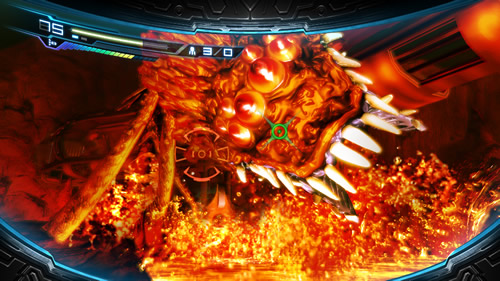
As the years passed I got through the majority of the Metroid titles and then it was time for the series to pass into another's hands; Team Ninja. Other M has received a lot of criticism from the community, mainly for Samus' emotionless voice. But you know what? I enjoyed the hell out of the game. It offered the much needed back-story to her relations that have only been briefly touched on in the past, and even though the Team Ninja x Nintendo pairing seemed odd, it worked. They managed to put so many pulls of nostalgia into Other M that it was undoubtedly Metroid and it found a very happy medium between the classic 2D style and Retro's luscious 3D worlds.
Needless to say, I am really excited to see where the next 25 years takes my favourite heroine. With the 3DS and Wii U dripping with untapped potential, it would make me very happy to see another classically styled title or a mammoth creation from Retro Studios or other such developers in future. Samus still has an entire universe and a lot of Metroids and planets to destroy!
Rudy Lavaux, Reviewer
Metroid on the NES was my first experience with a Nintendo game, at the age of 5, which has to be around 1990. The game wasn't mine, nor was the console, I was too young to own one. Obviously, I didn't know what to do, but I remember being fond of the different coloured doors, the music, and the exploration. My poor gaming skills at such a young age didn't allow me to get far but nevertheless, just from the general feel of the game, this started my love for the NES and pretty much anything Nintendo crafted later on. Strangely enough, this is the only episode I don't own yet in its original format, though it was offered to me by Nintendo on Virtual Console and it was an unlockable bonus on both Metroid Prime and Metroid: Zero Mission.)I wouldn't own a Metroid game until I got a Game Boy. Metroid II: Return of Samus, while considered one of the weakest entries in the series for its more linear structure, black and white graphics and worse music over its NES predecessor, still holds a special place in my gaming memories. That is the first Metroid I ever beat, since I could play it to my heart's content, and it brought lots of new stuff to the series that remained in subsequent games, such as the Space Jump, Spazer, Spring Ball or Spider Ball. It's still a really cool game in my eyes that I enjoy beating in a speed-run every once in a while. My current record lies at 1 hour and 54 minutes to beat it with 100% of items collected. Can you do better?
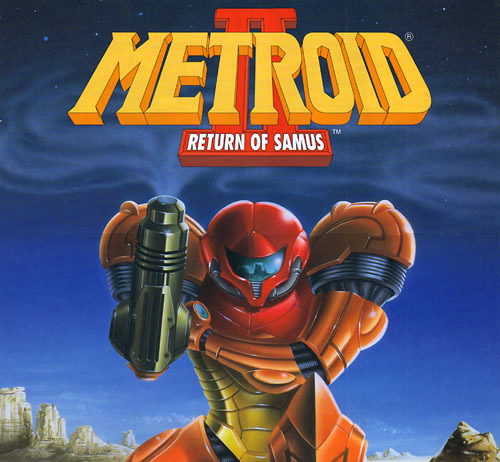
Then the SNES rolled in and I got to experience Super Metroid. With its gorgeous graphics, cool music and everything else, this is still my favourite entry in the series, right up there in my top ten of the best games of all time. It has to be the Metroid episode I played most, and I have a sweet spot for Dachora and especially the cute Etecoons that teach you how to perform a Wall Jump.
I love pretty much the entire series, though I disliked every attempt it made at giving the player the slightest hint as to where to go next. Figuring that out by yourself is part of what made the early Metroid games awesome in my eyes. However, I have to say Metroid Prime: Hunters is my worst experience with the franchise. If there is one thing I love the series for, it is the solo exploration. While I'm all for the inclusion of a multiplayer mode in Metroid games, to broaden its appeal to FPS gamers, I don't want the solo adventuring part to be sacrificed in the process. The single player mode in Metroid Prime: Hunters, in my opinion, was a disaster. Far too short, with hardly anything to do and too few items to hunt. That being said, I gladly give credit to Nintendo for making such an enjoyable control scheme for a first-person game on the DS and managing to make the game look so good on the humble DS hardware.
Aaron Elias, Previews Writer / Moderator
Like many of my favourite game series, the start of my Metroid obsession began when I got Super Metroid as a birthday present as a youngster. I can safely say that the game is one of my favourites of all time (my dad sure knew how to pick them!). Thinking back, it seemed like it took an age to beat it. I can still remember first gaining access to the vegetation area of Brinstar and the awesome music kicking in, literally tip-toeing through the Wrecked Ship and being scared of what I would find in the upcoming corridors, and my heart beating a hundred times a second as I fought the game’s bosses in locked-down rooms with nowhere to hide. The beauty of it all was the complete freedom you had and discovering secret passageways or hidden items in the walls and ceilings. There were no hints as to where to go next other than using your own memory to remember which areas were now accessible once you had obtained a new suit upgrade like the Speed Booster or High Jump Boots. I don’t think there has ever quite been a game like Super Metroid.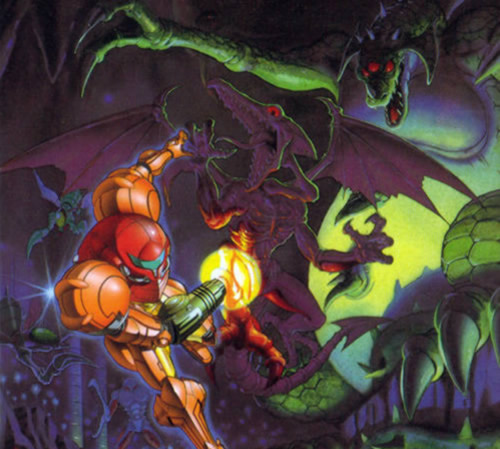
Retro Studios’ first-person adventure, Metroid Prime blew me away. Having played Super Metroid endlessly in the past, this now felt like I was literally seeing everything from Samus’ point of view. This felt like you were the lone bounty hunter on an unknown planet. Everything Retro did here was sublime and the praise they get is more than deserved. Furthermore, I enjoyed the way the story was told through the scanning of objects and log entries in computers to learn the lore of the world and exactly what happened on Tallon IV. Kenji Yamamoto added to his already fantastic Super Metroid soundtrack by composing some incredible pieces for Prime too. Metroid had been reborn. I equally loved the sequel, Echoes, which featured one of the best suits in the series, the Light Suit, and the smooth Wii motion controls in Corruption.
One thing I find so impressive with Metroid games is that players are to this day still finding new paths and ways to clear the games in the fastest time possible. It might not be far from the truth to say Metroid started speed running. I have been known to do this myself, and used to repeatedly run through Metroid Fusion, eventually clocking under an hour. I hope Metroid continues to encourage speed running in all its games.
I know Retro have spent most of their time working on Metroid Prime games, but I cannot help but imagine what a first person Metroid game on Wii U could look like. As much as I desperately want a new 2D Metroid, I would give anything to see this on Nintendo’s next console. Also, Nintendo, if you are reading this, please go back to making Samus looking more like a woman and less like an anime character...


 Sign In
Sign In 13.08.2011
13.08.2011 
 Link to this post:
Link to this post: 
 RudyC3
RudyC3  Subscribe to this topic
Subscribe to this topic Features
Features






 Top
Top

